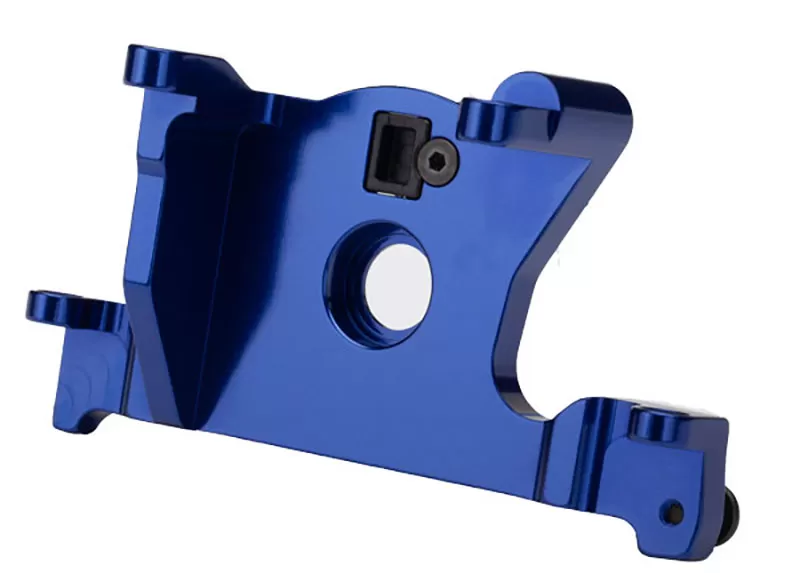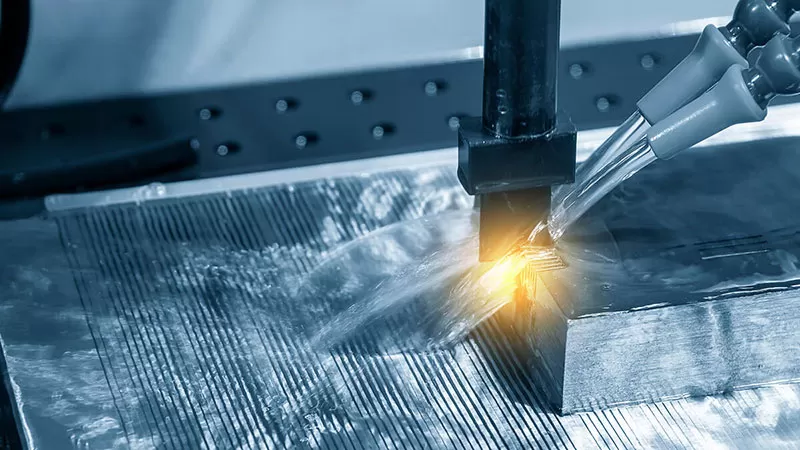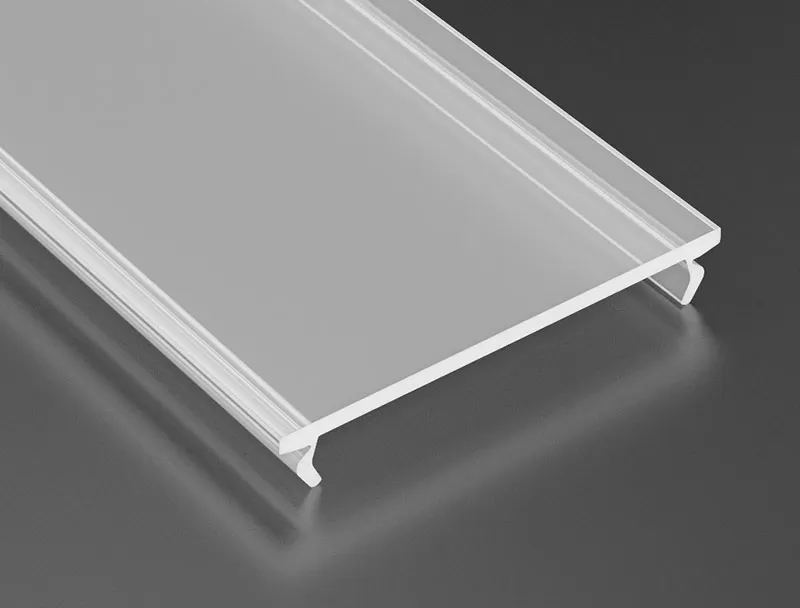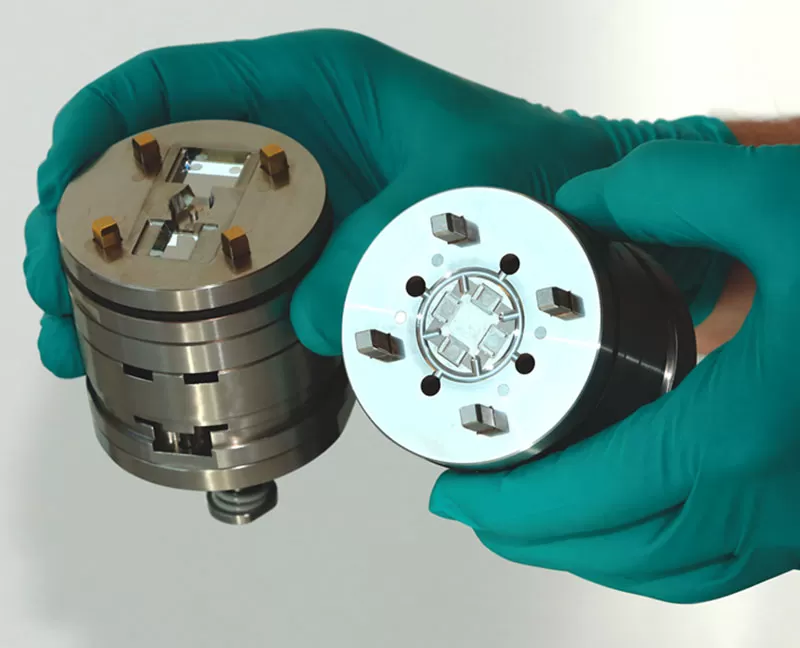Manufacturing Guide for Custom Smart Speaker Grill Prototype
Introduction
Speaker grills are an essential component of any smart speaker. They not only protect the speaker’s internal components from damage but also play a significant role in enhancing the sound quality. However, not all smart speakers come with the perfect speaker grill design that meets your aesthetic and functional needs. That’s where custom smart speaker grill prototype come in. Custom speaker grill prototypes are a product of rapid prototyping, a process that involves creating a functional model of the final product quickly and cost-effectively. The process allows for the creation of complex and intricate designs that would be difficult or impossible to achieve using traditional manufacturing methods. Having a well-designed speaker grill is essential for smart speakers, as it can significantly impact the sound quality and overall user experience. A poorly designed speaker grill can cause distortion or muffling of sound, resulting in a less than optimal listening experience. A well-designed speaker grill, on the other hand, can enhance the sound quality and add to the overall aesthetic appeal of the smart speaker.

Customized Speaker Grill Prototype
Understanding Speaker Grills
Speaker grills are protective covers that are placed over the speaker drivers in a smart speaker. They are designed to protect the internal components of the speaker from damage while allowing the sound to pass through.
What are speaker grills and why are they important?
Speaker grills are an essential component of any smart speaker, as they play a critical role in protecting the internal components from dust, dirt, and other debris that can cause damage. They also help to prevent accidental damage to the speaker drivers, which can cause distortion or even complete failure of the speaker.
In addition to their protective function, speaker grills also play a significant role in enhancing the sound quality of the smart speaker. The design of the grill can impact the frequency response of the speaker, affecting the overall tonal balance and clarity of the sound. A well-designed speaker grill can help to minimize distortion and ensure that the sound is clear and accurate.
Different types of speaker grills
There are several different types of speaker grills, each with its own unique characteristics and benefits. Some of the most common types of speaker grills include:
- Perforated grills: These grills feature small holes or perforations that allow the sound to pass through while providing protection for the speaker drivers. They are the most common type of speaker grill and are often used in commercial and residential speaker systems.
- Mesh grills: Mesh grills are similar to perforated grills but feature a fine wire mesh instead of small holes. They provide more protection for the speaker drivers but can also affect the sound quality if not designed properly.
- Cloth grills: Cloth grills are made from a woven fabric material and are often used in high-end speaker systems. They provide excellent protection for the speaker drivers while allowing the sound to pass through with minimal distortion.
Factors to consider when designing a speaker grill
When designing a speaker grill, there are several factors that need to be taken into consideration, including:
- Acoustic transparency: The grill should be designed to allow the sound to pass through with minimal distortion. This requires careful consideration of the grill’s material and design.
- Structural integrity: The grill needs to be strong enough to provide adequate protection for the speaker drivers. This requires careful consideration of the grill’s material and thickness.
- Aesthetic appeal: The grill should be designed to complement the overall aesthetic of the smart speaker. This requires careful consideration of the grill’s shape, color, and finish.
By taking these factors into consideration when designing a speaker grill, you can ensure that the final product not only provides adequate protection for the speaker drivers but also enhances the overall sound quality and aesthetic appeal of the smart speaker.
Rapid Prototyping Process for Speaker Grills
Rapid prototyping is a process that involves creating a functional model of the final product quickly and cost-effectively. This process can be used to create custom speaker grills that meet your specific design requirements. In this section, M2 engineers will provide an overview of the rapid prototyping process for speaker grills, the different methods used, and the advantages and disadvantages of using this process.
Overview of the rapid prototyping process
The rapid prototyping process for speaker grills typically involves the following steps:
- Design: The first step is to create a 3D design of the speaker grill using computer-aided design (CAD) software.
- Prototype creation: Once the design is complete, a prototype of the speaker grill is created using one of several rapid prototyping methods.
- Testing: The prototype is then tested to ensure that it meets the desired specifications and performs as expected.
- Refinement: Based on the results of the testing, the design is refined, and a new prototype is created.
- Final production: Once the final design has been approved, the custom speaker grills are manufactured using the chosen method.
Different rapid prototyping methods for speaker grills
There are several different methods that can be used to create custom smart speaker grill prototype. Some of the most common methods include:
- 3D printing: This method involves creating a 3D model of the speaker grill using CAD software and then printing it using a 3D printer. This method is ideal for creating small to medium-sized speaker grills with complex designs.
- CNC machining: This method involves cutting the speaker grill out of a block of material using a computer-controlled machine. This method is ideal for creating larger speaker grills and those made from harder materials.
- Laser cutting: This method involves using a laser to cut the speaker grill out of a flat sheet of material. This method is ideal for creating speaker grills with intricate designs and details.
Choosing the best rapid prototyping method for your speaker grill
When choosing the best rapid prototyping method for your speaker grill, you will need to consider several factors, including the size, complexity, and material of the grill. 3D printing is ideal for smaller, more intricate designs, while CNC machining is better suited for larger, more complex designs. Laser cutting is ideal for creating speaker grills with intricate designs and details.
Advantages and disadvantages of rapid prototyping for speaker grills
One of the main advantages of using rapid prototyping for speaker grills is that it allows for the quick and cost-effective creation of custom designs. This process also allows for the testing of different design iterations and ensures that the final product meets the desired specifications.
However, rapid prototyping also has some disadvantages. One of the main disadvantages is that the quality of the prototype may not be as high as that of the final product. Additionally, some rapid prototyping methods may be limited in terms of the materials and finishes that can be used.

Custom Speaker Grills
Designing Custom Smart Speaker Grill Prototype
Here are some factors to consider when designing custom speaker grills:
- Speaker size and shape – The grill needs to properly fit the speaker it is covering. Measure the speaker diameter or dimensions to create a grill with the appropriate size and shape.
- Open area percentage – The open space in the grill design impacts the sound that passes through. For most speakers, 40-60% open area is a good target. Too little open space can muffle the sound, while too much can reduce bass response.
- Material – Popular options for DIY speaker grills include metal, wood, and fabric. Metal and wood grills provide more directional sound while fabric grills produce a more diffused, omnidirectional sound. Paint or stain wood and metal grills to match your decor.
- Aesthetic – Design a grill that matches your speaker cabinet and complements your room’s decor. Consider elements like round vs square cuts, symmetry, and any motifs or patterns. sketch ideas on paper or use design software.
- Tools for cutting – To cut wood, metal, and fabric, you can use tools like jigsaws, scroll saws, rotary tools, laser cutters, and CNC machines. Wood and metal can also be cut using drill presses and tin snips. Fabric only requires regular scissors and fabric shears.
Design tips:
- Start with a simple pattern and build up complexity. It’s easy to add more elements but hard to take them away.
- For wood and metal, consider geometry like circles, squares and hexagons. Or incorporate custom shapes for a unique look.
- For fabric, quilting motifs and Moroccan-style patterns work well and are easy to achieve. Consider layering multiple fabrics for added depth.
- Use a laser cutter or CNC machine to achieve highly intricate speaker grill designs with precision. These tools streamline the cutting process for wood, metal, and other materials.
- Stain or paint the grill to match or complement your speaker cabinet for a cohesive look.
- Leave the center most open for the best sound quality. The outer edges of the grill can have a more intricate pattern.
Materials for Custom Smart Speaker Grill Prototype
When designing a custom speaker grill, the choice of material plays a critical role in achieving the desired sound quality and aesthetic appeal. In this section, we will discuss different materials commonly used for speaker grills, their pros and cons, and how to choose the best material for your speaker grill.
Different materials for speaker grills
There are several different materials that can be used to create speaker grills. Some of the most common materials include:
- Steel: Steel is a durable and sturdy material that is commonly used for speaker grills. It provides excellent protection for the speaker drivers and is available in different finishes, including powder-coated and brushed.
- Aluminum: Aluminum is lightweight and durable, making it an ideal material for speaker grills. It is available in different finishes, including anodized and powder-coated.
- Plastic: Plastic is a lightweight and cost-effective material that is commonly used for speaker grills. It is available in different colors and finishes and can be easily customized to achieve different designs.
- Fabric: Fabric is a popular material for high-end speaker grills. It provides excellent acoustic transparency and is available in different colors and textures.

Aluminum Alloy 7075 For Cnc Machining

Aluminum Alloy 7075 For Cnc Machining
Pros and cons of each material
Each material has its own unique set of pros and cons that need to be taken into consideration when selecting the best material for your speaker grill.
- Steel: Steel is durable and provides excellent protection for the speaker drivers. However, it can be heavy and may not be suitable for larger speaker grills.
- Aluminum: Aluminum is lightweight and durable, making it ideal for larger speaker grills. However, it may not provide as much protection as steel and may be more expensive.
- Plastic: Plastic is lightweight and cost-effective, making it an ideal material for smaller speaker grills. However, it may not be as durable as other materials and may not provide as much protection.
- Fabric: Fabric provides excellent acoustic transparency and is available in different colors and textures. However, it may not provide as much protection as other materials and may not be suitable for larger speaker grills.
Choosing the best material for your custom smart speaker grill prototype
When choosing the best material for your speaker grill, you will need to consider several factors, including the size and complexity of the grill, the desired sound quality, and the overall aesthetic appeal. Steel is ideal for larger and more complex designs that require more protection, while aluminum is better suited for larger designs that require a lightweight material. Plastic is ideal for smaller and less complex designs, while fabric is ideal for high-end speaker systems that require excellent acoustic transparency.
The choice of material for your speaker grill plays a significant role in achieving the desired sound quality and aesthetic appeal. By considering the pros and cons of each material and taking into account the specific requirements of your design, you can select the best material for your speaker grill.
Manufacturing Custom Smart Speaker Grill Prototype
Once you have designed your custom speaker grill and selected the material, the next step is to manufacture the grill. In this section, we will provide an overview of the manufacturing process for speaker grills, the different manufacturing methods used, and the advantages and disadvantages of each method.
Overview of the manufacturing process for speaker grills
The manufacturing process for speaker grills typically involves the following steps:
- Material preparation: The selected material is prepared for manufacturing, which may involve cutting or shaping the material to the desired size and shape.
- Manufacturing: The grill is then manufactured using one of several methods, such as stamping, laser cutting, or CNC machining.
- Finishing: Once the grill is manufactured, it is finished to achieve the desired texture, color, or surface finish.
- Quality control: The finished grill is then inspected to ensure that it meets the desired specifications and quality standards.
Different manufacturing methods for speaker grills
There are several different manufacturing methods that can be used to create custom speaker grills. Some of the most common methods include:
- Stamping: Stamping involves cutting the grill out of a sheet of metal using a stamping press. This method is ideal for creating large quantities of speaker grills quickly and cost-effectively.
- Laser cutting: Laser cutting involves using a laser to cut the grill out of the selected material. This method is ideal for creating speaker grills with intricate designs and details.
- CNC machining: CNC machining involves cutting the grill out of the selected material using a computer-controlled machine. This method is ideal for creating larger speaker grills and those made from harder materials.
Choosing the best manufacturing method for your speaker grill
When choosing the best manufacturing method for your speaker grill, you will need to consider several factors, including the size and complexity of the grill, the material, and the desired surface finish. Stamping is ideal for creating large quantities of speaker grills quickly and cost-effectively, while laser cutting is better suited for creating speaker grills with intricate designs and details. CNC machining is ideal for creating larger speaker grills and those made from harder materials.
Advantages and disadvantages of different manufacturing methods
Each manufacturing method has its own unique set of advantages and disadvantages that need to be taken into consideration when selecting the best method for your speaker grill.
- Stamping: Stamping is a cost-effective method for creating large quantities of speaker grills quickly. However, it may not be suitable for creating speaker grills with intricate designs or details.
- Laser cutting: Laser cutting is ideal for creating speaker grills with intricate designs and details. However, it may not be suitable for larger speaker grills or those made from harder materials.
- CNC machining: CNC machining is ideal for creating larger speaker grills and those made from harder materials. However, it may be more expensive than other manufacturing methods.
Selecting the best manufacturing method for your speaker grill depends on several factors, including the size and complexity of the grill, the material, and the desired surface finish. By considering the advantages and disadvantages of each manufacturing method and taking into account the specific requirements of your design, you can select the best method for your speaker grill.
Testing and Quality Control
Testing and quality control are critical components of the speaker grill manufacturing process. In this section, we will discuss the importance of testing and quality control, different testing methods for speaker grills, and quality control measures to ensure the final product meets your specifications.
Importance of testing and quality control in the speaker grill manufacturing process
Testing and quality control are essential components of the speaker grill manufacturing process as they ensure that the final product meets the desired specifications and quality standards. By testing the speaker grill during the manufacturing process, you can identify any issues or defects early on and take corrective action to ensure that the final product meets your requirements.
Different testing methods for speaker grills
There are several different testing methods that can be used to ensure that the speaker grill meets the desired specifications. Some of the most common testing methods include:
- Acoustic testing: Acoustic testing involves measuring the sound quality and frequency response of the speaker grill to ensure that it produces the desired sound.
- Strength testing: Strength testing involves subjecting the speaker grill to different levels of stress to ensure that it can withstand the expected wear and tear.
- Durability testing: Durability testing involves subjecting the speaker grill to different environmental conditions, such as temperature and humidity, to ensure that it can withstand the expected conditions.
Quality control measures to ensure the final product meets your specifications
To ensure that the final product meets your specifications, several quality control measures can be implemented, including:
- Inspection: The finished speaker grill should be inspected visually to ensure that it meets the desired aesthetics and surface finish.
- Dimensional checks: The speaker grill should be measured to ensure that it meets the desired size and shape.
- Material testing: The selected material should be tested to ensure that it meets the desired quality standards and properties.
- Production process monitoring: The production process should be monitored to ensure that the speaker grill is manufactured according to the desired specifications and quality standards.
Testing and quality control are critical components of the speaker grill manufacturing process. By using different testing methods and implementing quality control measures, you can ensure that the final product meets your specifications and quality standards.
Conclusion
Designing and manufacturing custom speaker grills requires careful consideration of several critical factors, including the design, material, manufacturing method, and testing and quality control measures. By following the rapid prototyping process and taking into account the specific requirements of your design, you can create a custom speaker grill that meets your desired specifications and quality standards. Remember to choose the best material and manufacturing method for your speaker grill and implement quality control measures to ensure that the final product meets your expectations.










